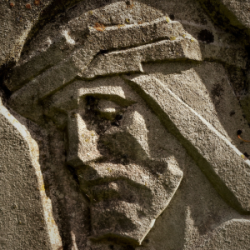Welcome readers! Please subscribe through the buttons on the right.

Our reading this week is from the gospel of Mark.
When Jesus had crossed again in the boat to the other side, a great crowd gathered around him; and he was by the sea. Then one of the leaders of the synagogue named Jairus came and, when he saw him, fell at his feet and begged him repeatedly, “My little daughter is at the point of death. Come and lay your hands on her, so that she may be made well, and live.” So he went with him.
And a large crowd followed him and pressed in on him. Now there was a woman who had been suffering from hemorrhages for twelve years. She had endured much under many physicians, and had spent all that she had; and she was no better, but rather grew worse. She had heard about Jesus, and came up behind him in the crowd and touched his cloak, for she said, “If I but touch his clothes, I will be made well.” Immediately her hemorrhage stopped; and she felt in her body that she was healed of her disease. Immediately aware that power had gone forth from him, Jesus turned about in the crowd and said, “Who touched my clothes?” And his disciples said to him, “You see the crowd pressing in on you; how can you say, ‘Who touched me?’” He looked all around to see who had done it. But the woman, knowing what had happened to her, came in fear and trembling, fell down before him, and told him the whole truth. He said to her, “Daughter, your faith has made you well; go in peace, and be healed of your disease.”
While he was still speaking, some people came from the leader’s house to say, “Your daughter is dead. Why trouble the teacher any further?” But overhearing what they said, Jesus said to the leader of the synagogue, “Do not fear, only believe.” He allowed no one to follow him except Peter, James, and John, the brother of James. When they came to the house of the leader of the synagogue, he saw a commotion, people weeping and wailing loudly. When he had entered, he said to them, “Why do you make a commotion and weep? The child is not dead but sleeping.” And they laughed at him. Then he put them all outside, and took the child’s father and mother and those who were with him, and went in where the child was. He took her by the hand and said to her, “Talitha cum,” which means, “Little girl, get up!” And immediately the girl got up and began to walk about (she was twelve years of age). At this they were overcome with amazement. He strictly ordered them that no one should know this, and told them to give her something to eat. (Mark 5:21-43)
The story of Jairus’ daughter and I have history. Over twenty years ago now, between our elder daughter and our younger daughter, Crystal and I went through the horrible experience of having two still births back-to-back. During this chapter of our lives, we were both pretty fundamentalist, and the story of Jairus’ daughter, especially the phrase talitha cum, held special meaning for us.
Today, this story is meaningful to me for different reasons. As is typical in the gospel of Mark, our reading this week includes one story interrupted by another. Mark repeatedly uses the narrative technique of interrupting one story with a secondary one. The first story envelopes a second story to direct listeners’ focus and understanding of both.
We are meant to compare these two stories, giving both stories space to explain the other. One hint of this is their parallelism: Jairus’ daughter is 12 years old and the woman with the vaginal hemorrhage has suffered for 12 years as well.
The contrasting social locations of these recipients of Jesus’ work is one of the most consequential comparisons for our justice work today. We’ll begin unpacking this contrast next.













